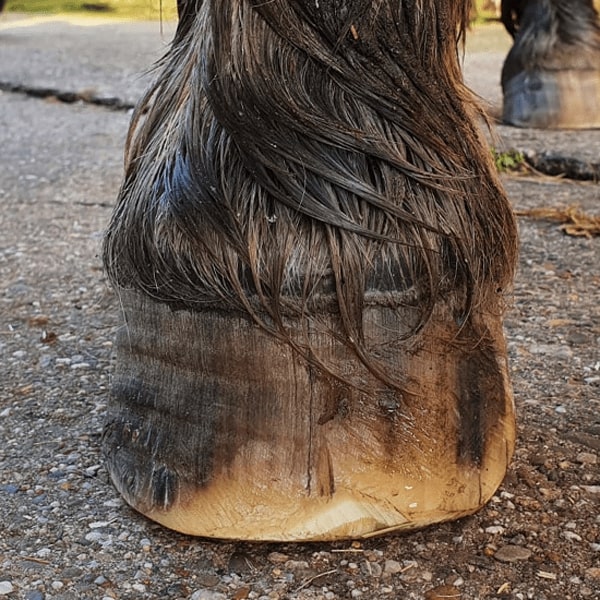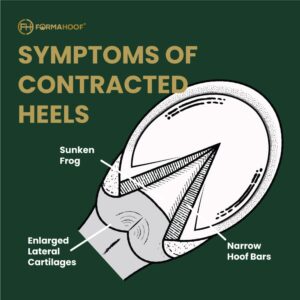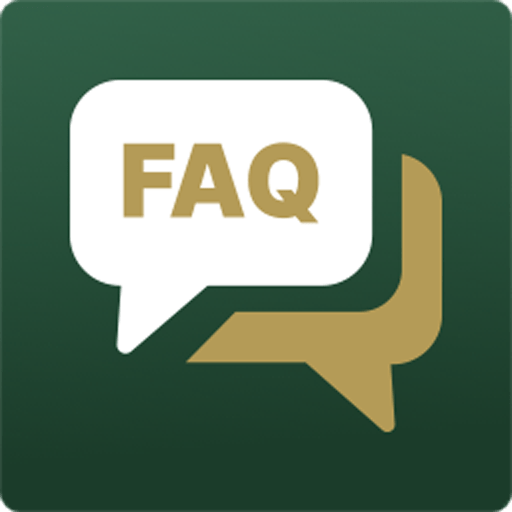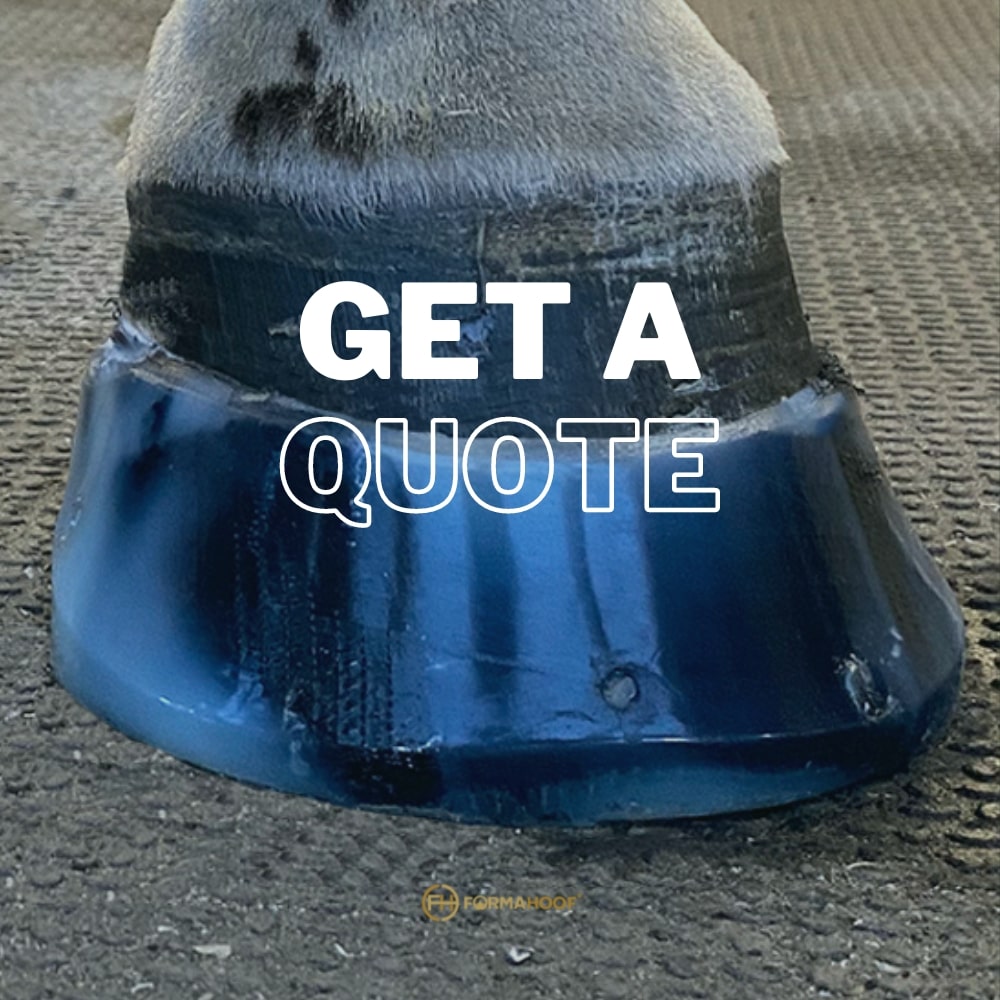The resplendent gallop of a horse, each hoof confidently kissing the earth beneath it, is a sight synonymous with natural beauty and vigour. But behind this seemingly effortless display, there is a well-tended foundation – hooves that have been carefully maintained, and sometimes transitioned back to their natural, barefoot state. It is a journey where the timeless wisdom of nature melds with innovative solutions like FormaHoof, ensuring horses not only maintain but flourish in their barefoot state.
Navigating through the splendid journey of managing equine hoof health often brings horse owners and caretakers to a contemplative crossroads: the decision between maintaining a traditionally shod hoof or exploring the holistic path of the barefoot transition. In an age where domestication has driven horses to traverse unnatural terrains, understanding the ramifications and management of both paths becomes paramount. With an ally like FormaHoof, a new chapter in holistic hoof care unfolds, offering both respite and rehabilitation in the barefoot transition journey.
Unveiling the Barefoot Philosophy
Horses, majestic creatures of strength and endurance, natively trot across diverse terrains without the aid of shoes. The barefoot philosophy, far from being a mere equestrian trend, is rooted in mimicking this natural lifestyle, aspiring to confer optimal hoof health and biomechanics. Barefoot horses often enjoy enhanced circulation in their feet, superior traction, and improved hoof growth – all physiological advantages that favour a holistic approach to their wellbeing.
Yet, navigating through the transition from shod to unshod hooves unveils its own set of challenges and nuances that must be met with both knowledge and compassion. Enter FormaHoof – a haven of support through these intricate pathways, empowering horses, and their caretakers to traverse this transition confidently.
The intricate dynamics of maintaining horse hoof health have sparked vehement discussions within the equine community, often polarizing perspectives into two camps: those favouring traditional shoeing and proponents of keeping horses barefoot. The debates, while often robust, tend to reflect personal and experiential opinions, occasionally sidelining scientific or widely accepted theoretical perspectives.
The Barefoot Perspective:
Advocates for keeping horses unshod argue that horses’ hooves are innately designed to handle various terrains and weights without the aid of shoes. They reference the adaptability of wild horses and assert that with regular attention and care from a qualified farrier or trimmer, a barefoot horse can maintain optimal hoof health. Notably, it is identified that horses unshod can work across a spectrum of surfaces, providing them with superior grip, and likely inflicting less severe injury should they kick. Yet, this stance is not without opposition or contention, particularly when domesticated horses are exposed to diverse working and performance environments, which can exert unusual stresses on their hooves.
The Shod Perspective:
Conversely, proponents of shoeing horses contend that domestication has altered the demands placed on horses’ hooves, necessitating additional protection. This perspective is fuelled by a variety of factors, including the nature of the terrains worked, additional weight from riders and tack, and the participation in activities that exert excess stress on the hooves. Ensuring the hoof wall’s wear does not surpass its growth and managing potential lameness also become pivotal points of consideration. A “necessary evil” as some might denote, shoeing provides a means of managing these unique challenges, with a generalized guideline suggesting horses be reshod, or at least visited by a farrier, approximately every 6 weeks.
Diverse Views and Controversies:
The dichotomy of views introduces narratives that sometimes pit the economic, emotional, and intellectual investments of farriers, horse owners, and veterinarians against ethical and holistic approaches towards horse care. Debates sometimes hinge on historical contexts of horse care, breeding practices, and the physical adaptability of horses to various stresses with or without shoes.
FormaHoof: A Middle Ground?
FormaHoof emerges as a potential reconciliatory innovation amidst these passionate discussions, providing an alternative that neither strictly adheres to traditional shoeing nor completely aligns with the barefoot philosophy. It proposes a solution that recognizes the need for added hoof protection in certain contexts while also embracing the benefits of allowing a more natural hoof function.
This innovation provides enhanced protection and support for the hoof without resorting to traditional shoeing methods. It addresses the concerns of both camps by providing a protective, supportive solution that does not require nailing into the hoof, thus ensuring that the hoof wall is not compromised. FormaHoof offers a safeguarding mechanism, potentially reducing the rate of wear on the hoof wall in working environments while also allowing for a semblance of the natural flexibility and function inherent in an unshod hoof.
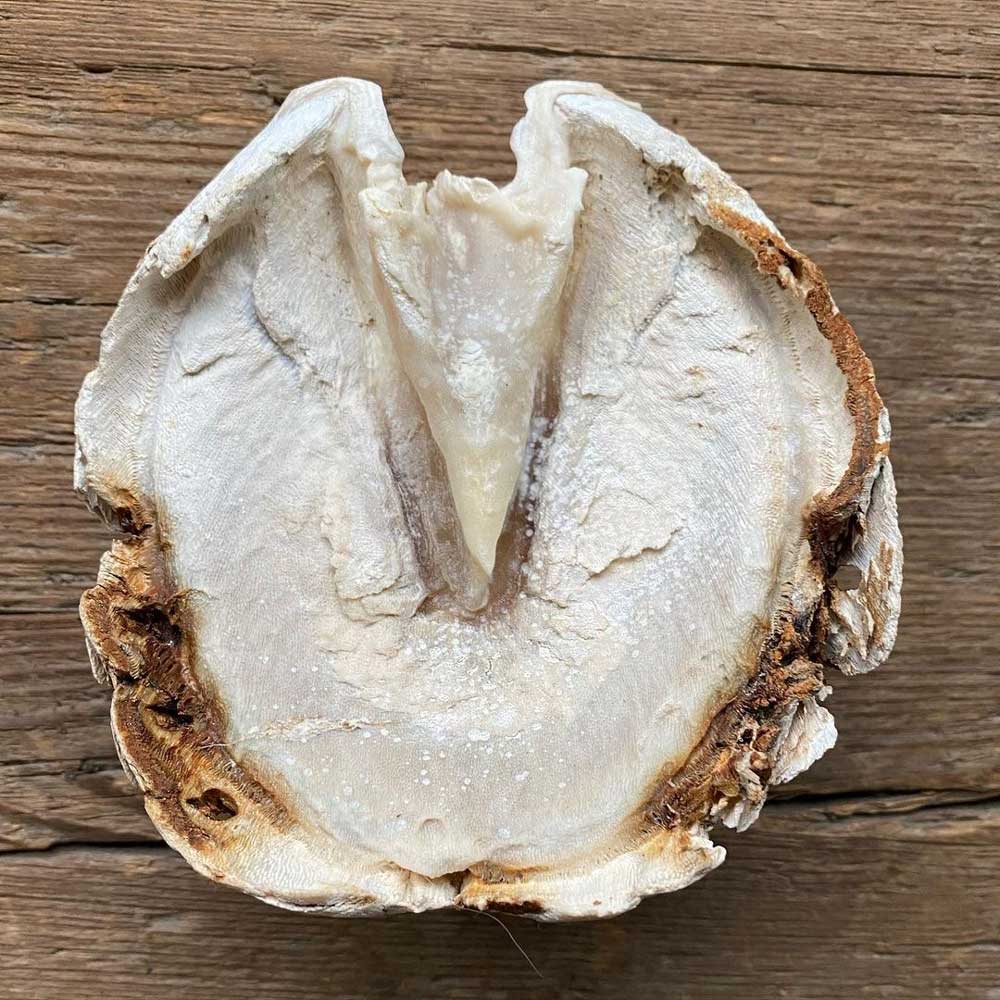
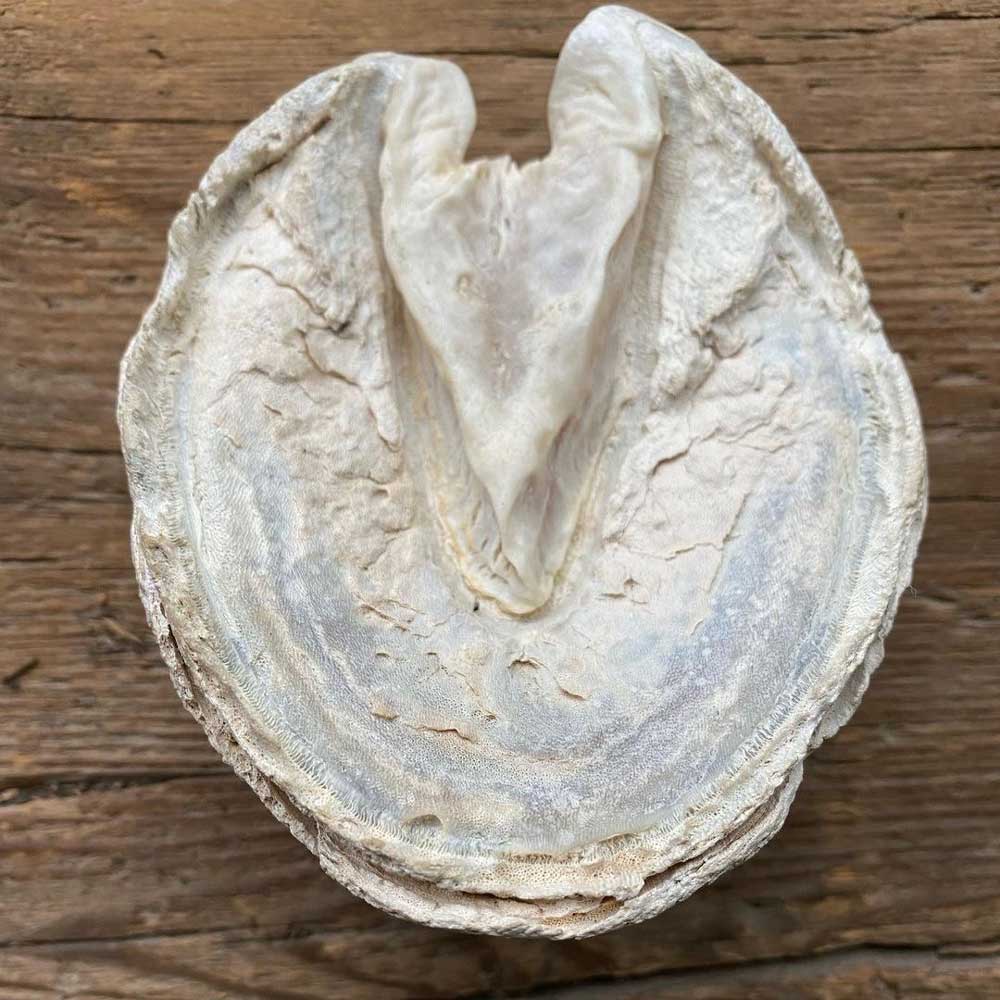
In bridging these disparate philosophies, FormaHoof does not merely present a product but offers a standpoint that navigates through the heated discussions within the equine community. It emphasizes that the well-being of the horse remains paramount, recognizing the validity in diverse perspectives on hoof care and providing an alternative that mitigates against extreme positions in either direction.
It brings forth a compromise – an innovative solution that attempts to marry the protective attributes of shoeing with the naturalistic advantages of keeping a horse unshod. Thus, FormaHoof delineates a new path forward, one that navigates through the complex, often emotionally charged discourse on equine hoof care, promising a more balanced approach to maintaining and ensuring hoof health in the modern, domesticated horse.
Delicate Balance: Wear vs. Growth
In the era of equine domestication, horse hooves are exposed to uncharacteristic stresses, notably, hard, and abrasive surfaces that expedite hoof wall wear at a rate surpassing its natural growth. Historically, horseshoes have intervened as a protective barrier, mitigating undue wear, and in many contexts, have been deemed necessary for horses traversing hard, human-made roads. However, this protection brings along its necessity for precise and regular management.
A traditionally shod horse, if not addressed with diligent farrier or trimmer visits, may encounter an excessive and unmanageable hoof wall length, risking chronic lameness and other health complications. This punctual hoof care, often occurring around every 6 weeks – or even more frequently for those engaged in heavy work on harsh terrains – remains a critical element of hoof management to ensure optimal hoof health and prevent overgrowth and related complications.
Conversely, an unshod hoof, when allowed to engage with nature as intended, avails itself to several advantages, echoing aspects highlighted by various horsemanship manuals. The journey, while individual to each and every horse, also presents intrinsic hoof benefits. An unshod horse, free from metal encumbrances, can navigate across varied surfaces with an enhanced grip, facilitating an authentic and natural interaction with the terrain. Moreover, the absence of metal shoes minimizes the risk of severe injury from kicks, both to humans and other equines, creating a safer environment in communal spaces.
However, it is imperative to underscore that transitioning a horse to an unshod state necessitates a measured and gradual approach. When shoes are removed, the hoof, now exposed to direct wear, gradually adapts by developing a firmer and more resilient wall over time. During this phase, careful management and moderated workloads are pivotal to prevent the horse from experiencing foot soreness or undue stress, ensuring a gentle acclimatization to its new, barefoot state.
FormaHoof: Redefining Transition and Rehabilitation
Within this nuanced context, FormaHoof emerges as a transformative solution, marrying innovative technology with an empathetic understanding of equine hoof dynamics. It amplifies the possibilities of successful barefoot transitions by providing a supportive structure during the critical adaptation period, ensuring hooves are fortified against accelerated wear while the natural, harder hoof wall is being developed.
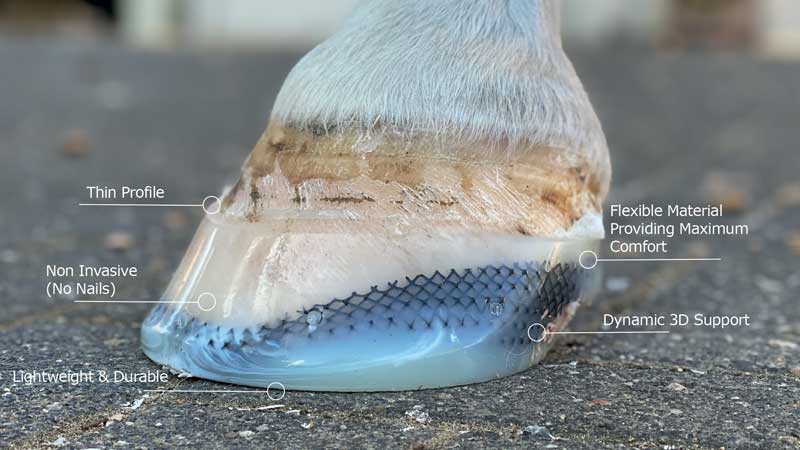
The distinctiveness of FormaHoof can be observed in it’s Application, which universally distributes the horse’s weight across the entire hoof, promoting blood circulation and encouraging organic hoof growth. By mimicking the architecture of a naturally healthy hoof, FormaHoof does not merely serve as a temporary solution but rather, it becomes a part of the holistic healing and growth process, paving the way for sustainable, robust hooves throughout and beyond the transition.
Even as the unshod hoof presents an array of advantages, it is not devoid of care requirements. Like their shod counterparts, unshod hooves demand regular attention from farriers or trimers to prevent splitting, cracking, and to ensure an even, harmonious interaction with the ground. Here again, FormaHoof demonstrates its continual utility, facilitating optimal hoof engagement through the transition and well into the horse’s barefoot life, fostering a sanctuary where natural and technologically enhanced hoof care converge.
Essential Knowledge, Rooted in Expertise
In this transitional voyage, understanding the intricate dynamics of a horse’s hoof under varying pressures is paramount. Renowned experts, such as Veron Dryden (DVM, CJF, APF), shed light on the physiological implications of shod versus barefoot hooves, emphasizing the natural expansion of the hoof capsule as a pivotal benefit of the latter. He goes on to note that “clips and glue-on aluminium shoes further restrict the hoof, whereas polyurethane shoes allow for more give and hoof expansion.” With every gallop and trot, the bare hoof gracefully accommodates the pressures exerted, a natural mechanism partially restricted by traditional shoes.
A scientific lens provided by FormaHoof delves deeper into this dynamic, exploring and validating these phenomena with data-driven studies that scrutinize the behaviour of hooves under staggering pressures, contrasting barefoot, shod, and FormaHoof-applied conditions. This empirical approach not only substantiates but enriches the dialogue around transitioning to barefoot, providing insights to caretakers worldwide.
Navigating Transition: A Gradual Unfolding
As we harness wisdom and technology to navigate through the transitions, understanding the temporal landscape is vital. Transition periods are not universally fixed but rather, tailored to each horse, typically spanning between 1-4 shoeing cycles. This period, delicately interwoven with variables like sole thickness and overall hoof health, becomes a canvas where informed decisions, guided by experts such as veterinarians and farriers, craft the journey ahead.
FormaHoof thus emerges as more than a product; it is a guide that mitigates challenges such as hoof soreness and potential abscesses during this critical period, ensuring the passage towards a barefoot lifestyle is not only achievable but sustainable.
Breaking New Ground: Barefoot in Competitive Arenas
A glance towards competitive arenas reveals an inspiring shift. Top-performing athletes, once adherents of traditional hoof-care norms, are embracing the barefoot movement. Examples from illustrious platforms like the Tokyo Olympics, where a significant fraction of the Swedish show jumping team triumphed sans horseshoes, are reshaping perceptions and regulations across the equestrian world.
FormaHoof navigates this evolving narrative, establishing that the realms of high-performance equine athleticism and authentic, natural hoof care can indeed be synergistically intertwined. With its innovative approach, it aligns with the emerging appreciation for maintaining a horse’s hooves in a state that’s not only conducive for peak performance but also intrinsically linked with their overall well-being.
“Equine Athletes: Achieving Peak Performance Through Optimal Hoof Care” is an article that encapsulates this theme, offering a rich, nuanced exploration into the burgeoning recognition of meticulous hoof care as a cornerstone for achieving and sustaining peak performance in equine athletes.
An Invitation to Holistic Wellbeing
As we witness the synthesis of tradition and innovation in hoof care, we at FormaHoof extend an invitation to you, to explore this harmonious blend, providing a sanctuary where horses recover, rehabilitate, and ultimately, revel in their natural state, barefoot and unburdened.
Your journey with FormaHoof does not end here – it blossoms into a community where knowledge, experiences, and breakthroughs are shared, forging paths towards sustainable, holistic equine wellbeing.
We welcome you to explore and become part of this vibrant, global community, where each step taken is a stride towards a future where every horse, every hoof, is a testament to the beauty and efficacy of merging nature with technology.
Take the first step with our free FormaHoof Basics introductory lecture available via the FormaHoof Academy today!

